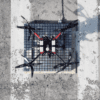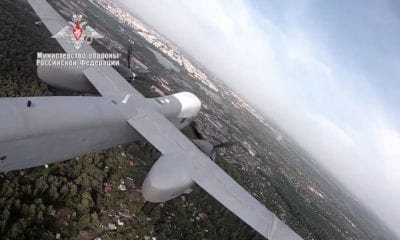News
A Drone Design for Windy Conditions
Drone delivery is time saving and efficient on a sunny day however windy weather conditions can make deliveries difficult. Most drones are unable to withstand wind because of their fixed-arm design making them less navigable and reducing their efficiency.
A Purdue University researcher has developed a patented design for drones with automatic folding arms that can make in-flight adjustments for operating in windy conditions; not only is it more energy efficient but it can handle a larger payload too. “Our drone design was inspired by the wings and flight patterns of insects,” said Xiumin Diao, Assistant professor in Purdue’s School of Engineering. We created a drone design with automatic folding arms that can make in-flight adjustments.”
The design provides drones with improved stability in windy conditions because the folding arms can move and change the centre of gravity of the device during flight making the drones more energy efficient since the movable-arm technology allows for the use of the full range of rotor thrust.
Diao added that the foldable arms can also help in search-and-rescue operations using drones because they can more effectively navigate the air conditions in ravaged areas and morph by moving the arms to go through narrow spaces, said researchers.
Explaining about fixed wing drones Diao said, “The drones on the market now have fixed arms and that greatly reduces their maximum payload capacity when the payload is offset their centre of gravity.”
Diao said the design provides drones with improved stability in windy conditions because the folding arms can move and change the centre of gravity of the device during flight. The technology is published in the ASME Journal of Dynamic Systems, Measurement and Control. Diao said, “Our design allows a larger payload because the movable arms can liberate part of rotor thrust to fight the weight on the overall device.”
Diao worked with the Purdue Office of Technology Commercialization to patent his device. This work aligns with Purdue’s Giant Leaps event, celebrating the global advancements in sustainability as part of Purdue’s 150th anniversary. At the yearlong celebrations- Ideas Festival, designed to showcase Purdue as an intellectual centre solving real-world issues, sustainability and energy-efficient devices, is one of the four themes.
The Purdue Office of Technology Commercialization operates one of the most comprehensive technology transfer programs among leading research universities in the U.S. Services provided by this office support the economic development initiatives of Purdue University and benefit the university’s academic activities. The office is managed by the Purdue Research Foundation, which received the 2016 Innovation and Economic Prosperity Universities Award for Innovation from the Association of Public and Land-grant Universities.























